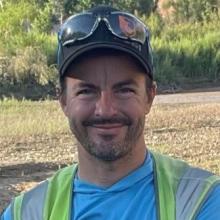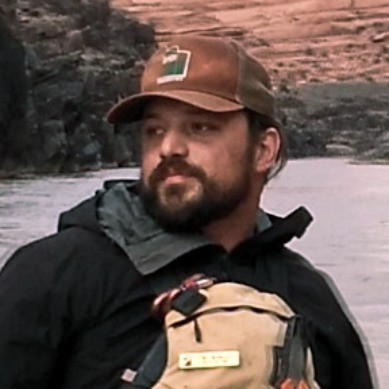Case Study Two - Moab
Moab UMTRA Project: Progress Toward Closure at a Complex Groundwater Site
Wednesday, November 15, 2023 | 9:00 a.m. to 12:00 p.m. (Pacific Time)
► watch the recording:

The United States Department of Energy Office of Environmental Management (DOE-EM) Moab site is the location of a former uranium ore-processing facility, which is now undergoing work as the Moab Uranium Mill Tailings Remedial Action (UMTRA) Project to address the mill tailings and contamination in the underlying groundwater. Located in the state of Utah next to the Colorado River, the site spans 480 acres, of which the mill tailings pile covers 130 acres. The 16 million tons of uranium mill tailings are in the process of being relocated offsite to an engineered disposal cell at Crescent Junction, Utah.
The groundwater at Moab has both uranium and ammonia contaminant plumes, with a context of hydrogeological complexity and the need to protect critical habitat in the Colorado River. Specifically, groundwater includes a freshwater unit underlain by a brackish/brine unit, and the groundwater surface elevation responds to river stage fluctuations which complicate the groundwater hydraulics. In fiscal year 2023, a team of Network of National Laboratories for Environmental Management and Stewardship, DOE, and Moab contractor staff conducted a review of technology approaches for the site, resulting in a set of actionable recommendations to help meet objectives and move the remediation process forward while protecting receptors.
This case study will present information spanning from the site context through current and proposed actions. Presentations will start with the site history and move into the conceptual site model for the hydrogeology and contaminant plumes. The objectives, Groundwater Compliance Action Plan, and Interim actions will be discussed. The risk and environmental protection issues will be explained. The presentations will then cover information on the current field status and proposed solutions for making progress toward the transition of the site to long-term stewardship under the DOE Office of Legacy Management (DOE-LM). The case study will finish with a panel discussion on implementing environmental restoration technologies and the path to closure for the Moab UMTRA Site.
Agenda
Timeline (Pacific Time)
|
Presentation Title
|
Presenter
|
9:00–9:03 a.m.
|
Welcome and Introductory Remarks |
Christian Johnson |
9:03–9:20 a.m.
|
Site History and Virtual Tour |
James Ritchey |
9:20–9:37 a.m.
|
Hydrogeology, Conceptual Site Model, and Interim Actions |
Ken Pill |
9:37–9:54 a.m.
|
Standards and Groundwater Compliance Action Plan (GCAP) Requirements |
Elizabeth Moran |
9:54–10:11 a.m.
|
Risk and Environmental Protection Issues |
Amoret Bunn |
10:11–10:28 a.m.
|
Proposed Solutions for Progress Towards Closure/ Transition to DOE-LM |
Brian Looney |
10:28–10:45 a.m.
|
Field Status Update |
Ken Pill |
|
10:45–11:00 a.m. |
BREAK |
|
11:00 a.m.–12:00 p.m.
|
Panel Discussion: Implementing Technologies and Path to Closure for the Moab UMTRA Site
|
Moderator: Panelists: |
Biographies
Moderators
 PNNL |
Christian Johnson has worked on environmental restoration and remediation technology research and development at Pacific Northwest National Laboratory (PNNL) since 1992. He has designed and implemented bioremediation systems to treat hydrocarbons and chlorinated solvents, authored guidance on performance and end-state evaluation of pump-and-treat and soil vapor extraction, and developed remediation decision support software such as RT3D, SOCRATES, TRAC, and Soil Vapor Extraction Endstate Tool. Johnson is also part of the Network of National Laboratories for Environmental Management and Stewardship, helping with reviews and recommendations for DOE-LM sites. _________________________________________________ |
 DOE Moab, EMCBC |
Elizabeth Moran is the environmental manager at the DOE-EM Moab, Environmental Management Consolidated Business Center (EMCBC). Prior to working for DOE-EM, she worked as a contractor for the UMTRA Project for over 17 years as a hydrogeologist and environmental scientist and has focused mainly on groundwater contamination, habitat protection, and groundwater remediation. As the project approaches closure, Moran has been working on determining the final groundwater compliance action strategy and the end-state vision of the project. Prior to UMTRA, Moran was a geologist at the Nevada National Security site. |








